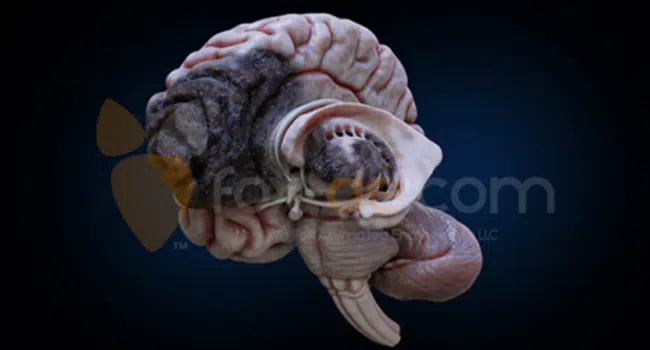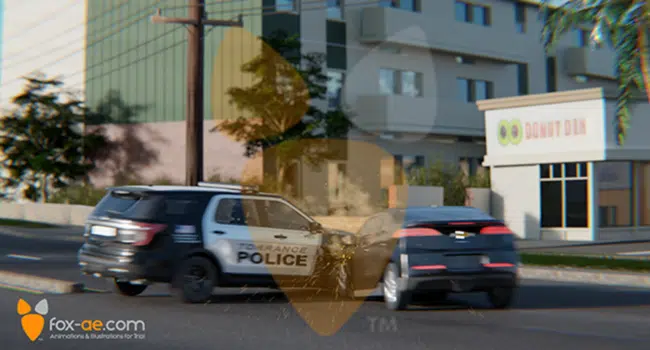Legal animation has become more and more common in today’s courtroom. Over the past ten years, legal animations, graphics, and illustrations have seen significant evolution. Animations have become an invaluable tool for law firms and legal teams of all sizes to strengthen and win their cases.
The arguments and issues that lawyers and expert witnesses offer are frequently too complex for the jury to comprehend. Attorneys with years of experience and education may be unaware of how little of these advantages the ordinary juror enjoys. In fact, many jurors might not be familiar with the pertinent legal or medical basics.
How, then, do jurors make decisions?
Research indicates that jurors determine their decisions using a very limited number of facts. They choose the simplified issues that are pertinent to the case at hand. Hence, simplifying issues and facts is vital to winning a case.
This is where legal animation can assist you in improving your case and moving it forward. An excellent technique to simplify a forensic explanation of how a set of events occurred is to use legal animation to create the biomechanics of an injury graphically. Litigation animation aids in making a logical connection between tangible evidence and witness testimony.
How Does Legal Animation Benefit A Case?

Legal animation is a type of evidence that can be utilized to present the jury with a vivid picture of a fact.
Here are some benefits of using legal animation in a court case
- Simplify the complex
To reach the appropriate verdict in many trials nowadays, complicated legal maneuvers are necessary. For instance, in a medical malpractice case, it’s almost impossible to get a successful judgment without talking about key medical concepts.
It is challenging to present compelling arguments often, especially when speaking to uninformed jurors. Animations have a significant impact on how a trial lawyer presents the case. The use of animations and visuals can increase the persuasiveness of an argument in many more situations, even though they may not be necessary in many cases.
What legal animation does is simplify the intricacies of your case by breaking them down into
easily digestible chunks. Illustrations or animations can emphasize a point more effectively than images and mere oral evidence.
- Boost understanding and retention
The jury in medical malpractice or wrongful death case must understand the distinction between what actually occurred and what should have occurred to reach a fair decision.
In a 3D animation, the jury is virtually there at the scene, helping them to comprehend complicated or implausible circumstances.

Animations do more than describe what happened to the jury. They clearly illustrate what happened using visual means so that everyone may understand what transpired.
In fact, scientific research has shown that presentations containing visual elements are about 43% more convincing than those without.
Think about not only stating to the court and jury that a surgeon had operated a wrong site, but also demonstrating to them exactly how the entire incident transpired. When you use legal animation, you are not just giving the viewer your point of view. You’re teaching them! This is a considerably more effective technique to present your point, as has been demonstrated time and time again.
-
Strengthen your expert’s argument
Medical errors are the third leading cause of death in the US. Proving medical errors in court can be a difficult task. Evidence of medical negligence involves familiarity with intricate medical issues, and strong connections to expert witnesses.
One of the reasons why the victims can be unsuccessful in their claims is the failure of an expert witness to convey difficult issues and concepts to the jury clearly. Simplicity might be obscured by all of the information in a patient’s medical narrative. This may include a variety of doctors, diagnoses, reports, and drugs.
Moreover, a claimant may get an unfavorable judgment when the expert fails to establish a causal relationship between the accident that occurred and the injury sustained by the victim. Legal animation is a simple approach to improve the effectiveness of your expert’s defense. Let’s consider a case where a victim was involved in a car accident due to the negligence of the driver. In a case like this, an expert witness may not be able to explain the victim’s anatomy in simple, relatable terms adequately.
3D animation can replicate the injury scene. This style of demonstration would illustrate the fractured bones and internal damage to highlight what is going on beneath the surface of the victim’s body.
Ways To Ensure Legal Animation Is Admissible In Court
When used appropriately, an animation can make or break a case, simplify complex terms, and processes, persuade a hesitant juror and provide tangible proof.
However, due to its dramatic impact, the trial lawyer must thoroughly examine demonstrative evidence to check for validity, relevancy, correctness, and the possibility of unjustified prejudice. Here are some ways you can employ to make sure your animations are admissible as demonstrative evidence.
- It must be authentic
Legal animation is authenticated if there is proof that the object is what its proponent asserts it to be.
The accuracy of the information in the animation and the fact that it was not fabricated must be established by the attorneys.
An expert witness is a key element for establishing authority and accuracy. Therefore, to ensure the authentication of an animation, you must show that such animations have been validated by an expert witness
An attorney can also demonstrate the authenticity of the animation video by making sure the other witnesses are included in the development process. In this way, your witness can testify
during the deposition that the legal animation is a reasonable representation of the facts in issue.
- It must be relevant
The use of legal animation is not relevant in every case before the court. Its use is only permissible if it would help the jury comprehend the case’s facts more thoroughly. This means that for an animation to be admitted as demonstrative evidence, it must have the propensity to increase or decrease the probability of a fact in question compared to what it would have been without the proof.
- The animations must fairly and accurately reflect the evidence to which they relate One of the most contested reasons for the inadmissibility of legal animation is its tendency not to be accurate and thus cause a prejudicial stance in the case. This is why it is very essential to accurately depict the facts of the case without additions that would mislead the jury.
This was especially noted in the case of Com. v. Sarge, where an ex-policeman killed his wife intentionally yet staged it to be in self-defense. In that case, the legal animation used by the commonwealth to prove the intentional killing was deemed to have fairly and accurately depicted the facts of the case.
On the other hand, in Clark v. Cantell, the court held that the legal animation adduced did not accurately and fairly depict the facts depicted. The case involved a car crash where the plaintiff testified that the vehicle was in a particular position and later depicted the same car in another position in her legal animation.
- The animations need to have a probative value that isn’t significantly overshadowed by the risk of unjust prejudice.
The attorney must establish that the probative usefulness of the animation outweighs the risk of unfair prejudice.
Courts are very particular about how much an animation may cause the jury to be biased in their judgment. So, if an animation video seems to be tilted in favor of one party, the court may render such an animation inadmissible.
In such a circumstance, the court would not take into cognizance the relevance of the evidence. In the Federal Rules of Evidence, it was stated that if there is a significant risk that the evidence will unfairly prejudice the jury or mislead the jury, the court may remove relevant materials even if it has some probative value.
Read more on KulFiy
Are You Compliant With International Labor Laws? 4 Things to Keep Top of Mind
